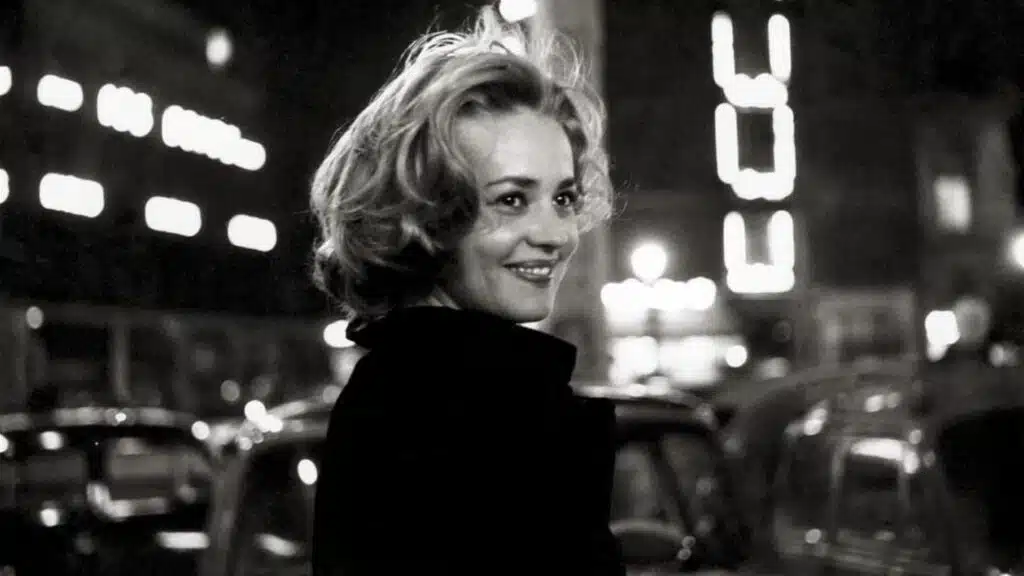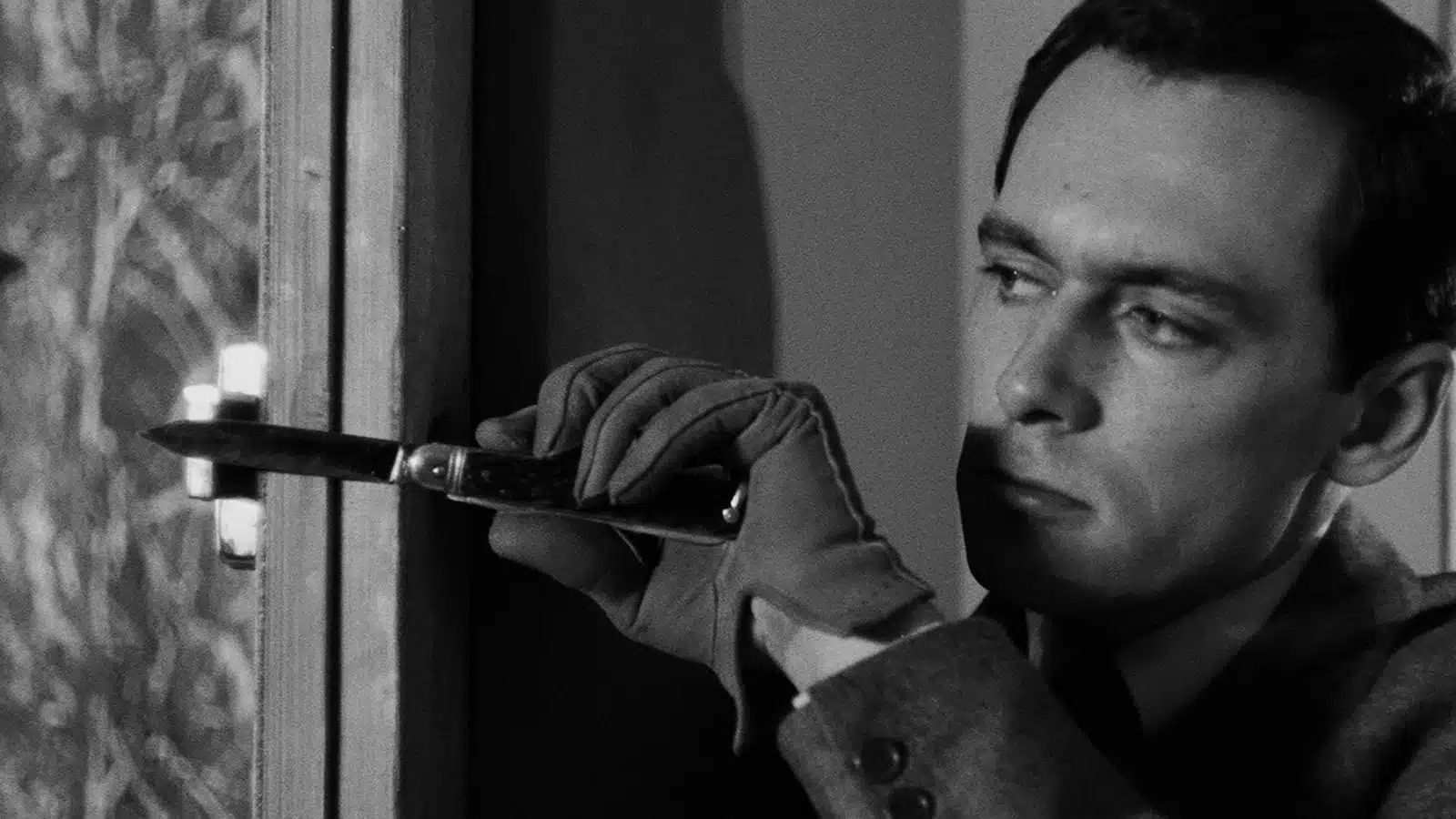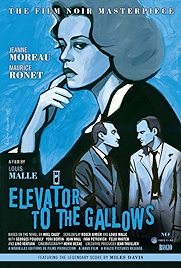Lean, spare and elegant, Elevator to the Gallows isn’t so lucky when it comes to titles. It also turns up as Elevator to the Scaffold, Lift to the Scaffold (particularly in the UK) and even Frantic (says the IMDb, though this must be vanishingly unusual). Or, in the original French Ascenseur pour l’échafaud.
It’s Louis Malle’s debut. He was only 24 at the time. And the plot is simple but fiendish. A man seen in opening shots on the phone arranging to meet his lover Florence (Jeanne Moreau) first has to deal with some business at work. Namely, killing his boss and making it look like suicide. Murder most foul accomplished, Julien (Maurice Ronet) is on the way out of the building when the lift he’s in stops mid-floor. The security guard has turned off the power and gone home, unaware there was anyone left inside, leaving Julien trapped between floors. It’s Saturday afternoon so he is probably going to be there for some time.
Out on the street, Julien’s car is proving too much of a temptation for surly street kid and James Dean wannabe Louis (Georges Poujoly), who steals it, taking his pretty girlfriend Véronique (Yori Bertin) along with him for an evening of wild hijinks. This also ends in murder.
Because that car is distinctive, a 1952 Chevrolet Styleline convertible, Julien – trapped in a lift/elevator/ascenseur the whole time – has soon been fingered for the murders committed by Louis. As the police hunt for Julien for the murders committed by Louis, it starts to become obvious that Julien’s alibi for crime number two is going to be that he couldn’t have done it, because he was committing crime number one. God, fate or luck laughs. Dashiell Hammett nods approvingly.
There are two couples in this film, who don’t interact except incredibly briefly. Louis and Véronique, young and limber, a dry run for Godard’s footloose New Wave duo played by Jean-Paul Belmondo and Jean Seberg in Breathless two years later. And Julien and Florence, older, more world weary, who talk on the phone in the opening scene but never meet at all. The “lucky” and “unlucky” couple, you could say, though there’s a kind of mocking payoff to both categories.
If Louis and Véronique are a New Wave couple in utero, so is the film, a harbinger of what was to come with Godard’s youthquake of street ambience and crash-edits. Julien and Florence are a different type of French archetype, the existential hero and heroine, though both (particularly him) are a touch undercooked.

Was the film made for export only? It looks like it, playing up to this notion of Frenchness as Left Bank, existential, cool, studied, smoking and well dressed, the France of philosophy and fashion, Sartre and Dior, zinc-topped bars and Gitanes.
Perhaps as a consequence the film comes shrouded in myths, some true, others not. That Malle shot Moreau’s long night-time wandering through the streets of Paris without lighting. That she’s not wearing make-up. Neither hold up to a moment’s scrutiny. That Miles Davis improvised his jazz score in one go. Also not true, but there are photographs from the studio where Moreau and Malle are drinking champagne while Davis plays, so maybe he did do it all in one night, if not one take.
Henri Decaë is the cinematographer and Malle has him to thank for a large chunk of this film’s acclaim. That opening frozen shot of Moreau’s face in extreme close-up, the later, super-grainy (because shot on very fast film) sequences shot on the night-time streets, the final sections where a cop (played by the effortlessly brilliant Lino Ventura) interrogates Julien, they all have a super-stylised look enhanced by Decaë’s high contrast looks.
“Cool” is the watchword. The way people look, smoke and walk, the cars they drive – look out for the Mercedes Gullwing with the “DeLorean doors”. The tech they use – like the Minox spy camera. The places they find themselves – the ultra-modern motel Louis and Véronique end up in eventually.
There is a lunge at political subtext, references to the colonial wars in Indo-China and Algeria, and the Second World War also rears its head in the shape of the rich German characters Louis and Véronique meet at the motel.
There’s a tendency to see this movie as a case of style over substance, as an exercise in playground existentialism. Maybe, but Malle does it so well. That sequence where Florence crosses a busy road of maybe six lanes of speeding traffic, looking neither to the left nor right, trusting to her own sense of cool to get her across unscathed.
Spoofable, very spoofable, in other words. That doesn’t mean it’s not great.
Ascenseur pour l’échafaud aka Elevator to the Scaffold – Watch it/buy it at Amazon
I am an Amazon affiliate
© Steve Morrissey 2023

